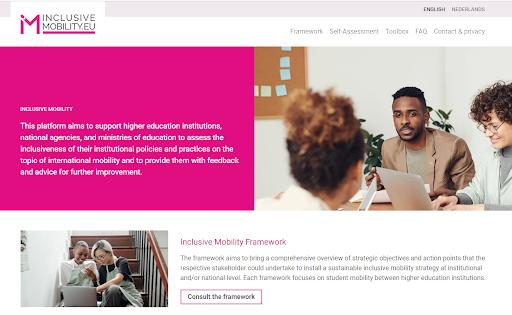- Summary
- Fact Sheet
- Synergy and Transfer
- More Information
The Inclusive Mobility Framework supports higher education institutions, ministries of education, and national agencies by offering strategies to foster inclusive mobility. It outlines essential policies and practices to create inclusive national or institutional mobility strategies. The self-assessment tool helps organizations evaluate their inclusion readiness and identify actionable improvements. Additionally, the Training Package offers practical guidance for implementing the framework, helping institutions enhance inclusivity across all stages of mobility programs.
Target Groups:
The primary beneficiaries are sending and hosting organizations, national agencies, and ministries of education. The framework particularly focuses on removing barriers to mobility for students with fewer opportunities, such as those with disabilities, from marginalized backgrounds, or facing economic constraints.
Special support required:
While the Inclusive Framework operates at an organizational level, InclusiveMobility.eu acts as a comprehensive platform providing country-specific information to aid both outgoing and incoming students, ensuring equitable support for disadvantaged learners by offering resources and guidance to navigate barriers.
Innovation:
The self-assessment tool within the Inclusive Mobility Framework is innovative in its capacity to evaluate inclusion efforts while offering specific recommendations for improvement. This tool allows organizations to assess their readiness and identify gaps in their inclusive mobility practices, with tailored action points to guide further development.
The framework’s adaptability offers considerable potential for synergy across other educational sectors. Its application could extend beyond higher education to adult education, vocational training, and non-formal learning environments, where inclusive practices are equally essential. Given its focus on building inclusive strategies, the framework aligns well with broader educational goals, such as the UN Sustainable Development Goals (SDGs), specifically regarding equitable access to quality education (SDG 4) and reducing inequalities (SDG 10). This makes it suitable for transfer into diverse educational settings where inclusion is a priority.
Erasmus+ project EPFIME run by the Flemish Ministry of Education and Training and the Support Centre Inclusive Higher Education in cooperation with the Erasmus Student Network, the Association for Higher Education Access & Disability, and the Irish Universities Association.
Project Website:

